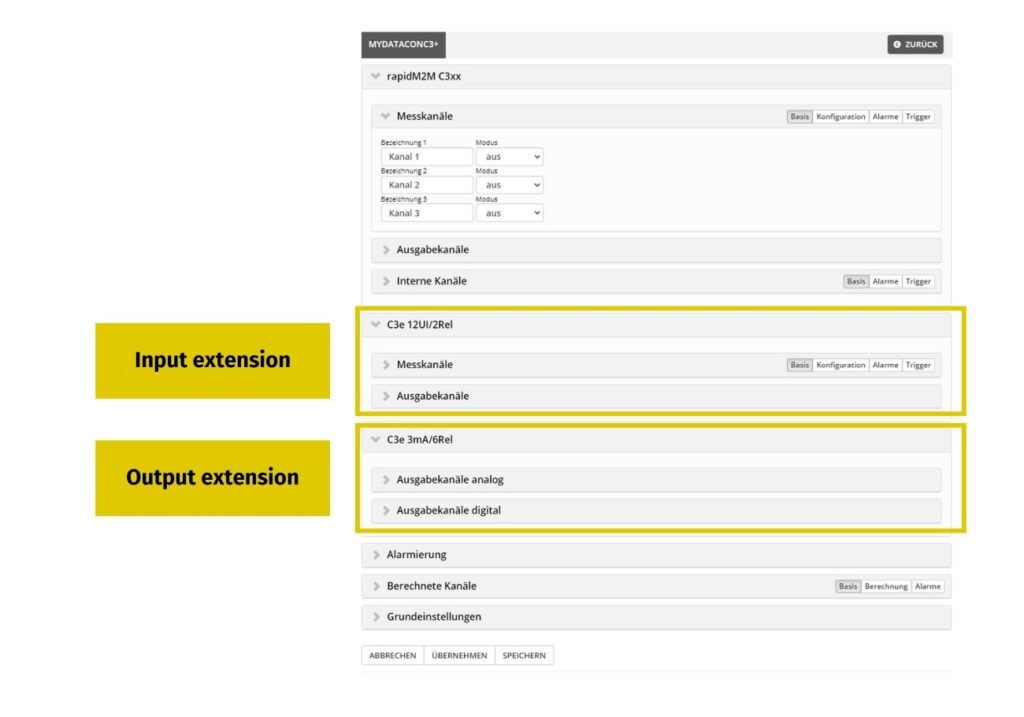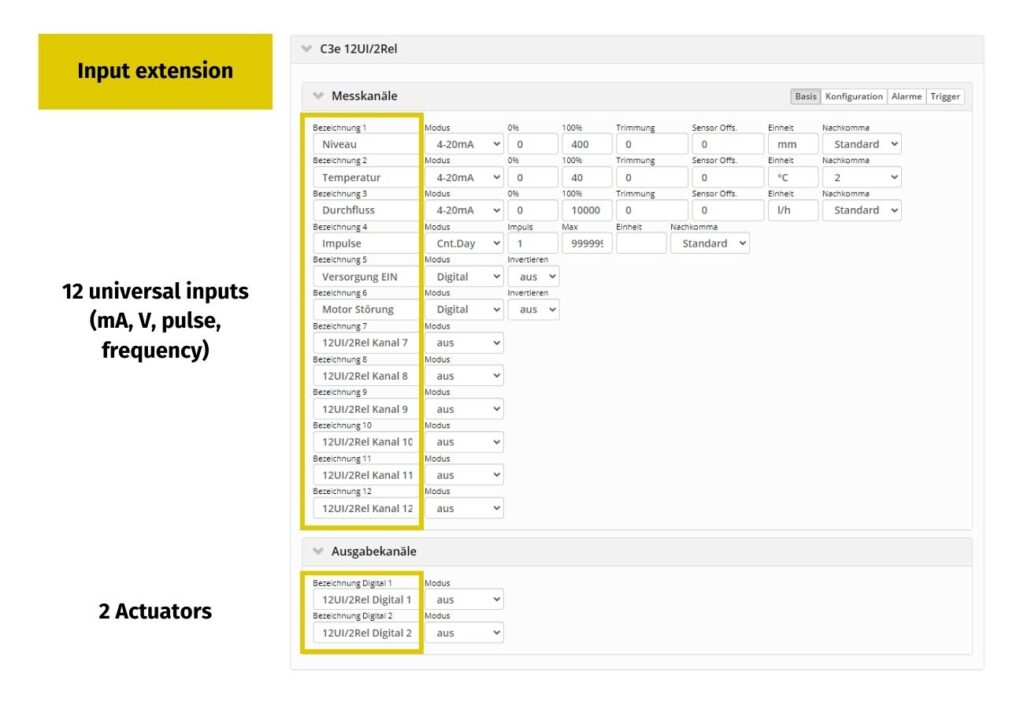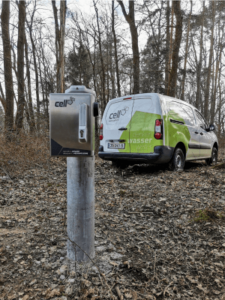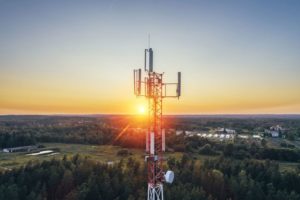The myDatalogC3 is used for data acquisition, communication and control. It combines PLC, router and firewall in one device and provides real-time data. The data connection is very efficient thanks to uplink technologies (mobile radio, WiFi, LAN). With the extension modules (input and output extension), the myDatalogC3 can be expanded to up to 27 industrial interfaces.
Possible Use Cases:
- Record sensor values
- Control plants remotely
- Optimise energy consumption
- Collect data from energy meters
- Monitor dosing pumps
The input extension (myDatalogC3e 12UI/2Rel) provides the ability to acquire signals from twelve universal inputs (mA, V, pulse, frequency). In addition, two actuators can be controlled by means of potential-free relay contacts.
The output extension (myDatalogC3e 3mA/6Rel) is used to output signals from three mutually isolated mA (0/4…20 mA) outputs. In addition, the six relay outputs can be used for direct switching of loads.
Configuring in the platform or programming in the studio gives the myDatalogC3 its intelligence. Prefabricated applications simplify the use of the data logger and can be used and modified as desired.
The basic application for the myDatalogC3
The basic application myDataconC3 makes parameterisation of the logger child’s play and reduces the hurdles at start-up to an absolute minimum.
It offers the following basic functions:
- Recording of all channels (inputs, outputs, internal channels)
- Configurable recording interval
- Constant online connection
- Configurable warning, alarm and trigger thresholds for inputs
- Alarm in case of supply voltage failure
The plus of the new application
The new application myDataconC3+ offers all the basic functions of the basic version. In addition, it supports one input extension and one output extension. Both the myDatalogC3 and the extension modules have their own serial number. The application automatically detects which extensions are connected. You do not need to configure a serial number of the extension modules. A physical connection to the base module via the CAN bus interface is sufficient.
This makes commissioning much easier. Furthermore, both extension modules do not have to be used at the beginning. It is possible to retrofit an extension module of a different type later.
If an additional input extension is used, it offers the same functions (alarms, triggers, …) of the universal channels as the basic module. The two relays of the input extension can also be used in digital mode.
With an additional output extension, you have three mA outputs available and can configure a static mA control value via the interface or the API using the myDataconC3+ application. The six relays of the output extension can also be used in digital mode.
This is how the configuration looks on the platform:



In this video you will learn in detail the most important facts about the data logger, possible areas of application and the new features of the software. In the last chapter (from minute 10:26) we get into the platform and show you how it all looks in practice.

Mit dem Laden des Videos akzeptieren Sie die Datenschutzerklärung von YouTube.
Mehr erfahren


